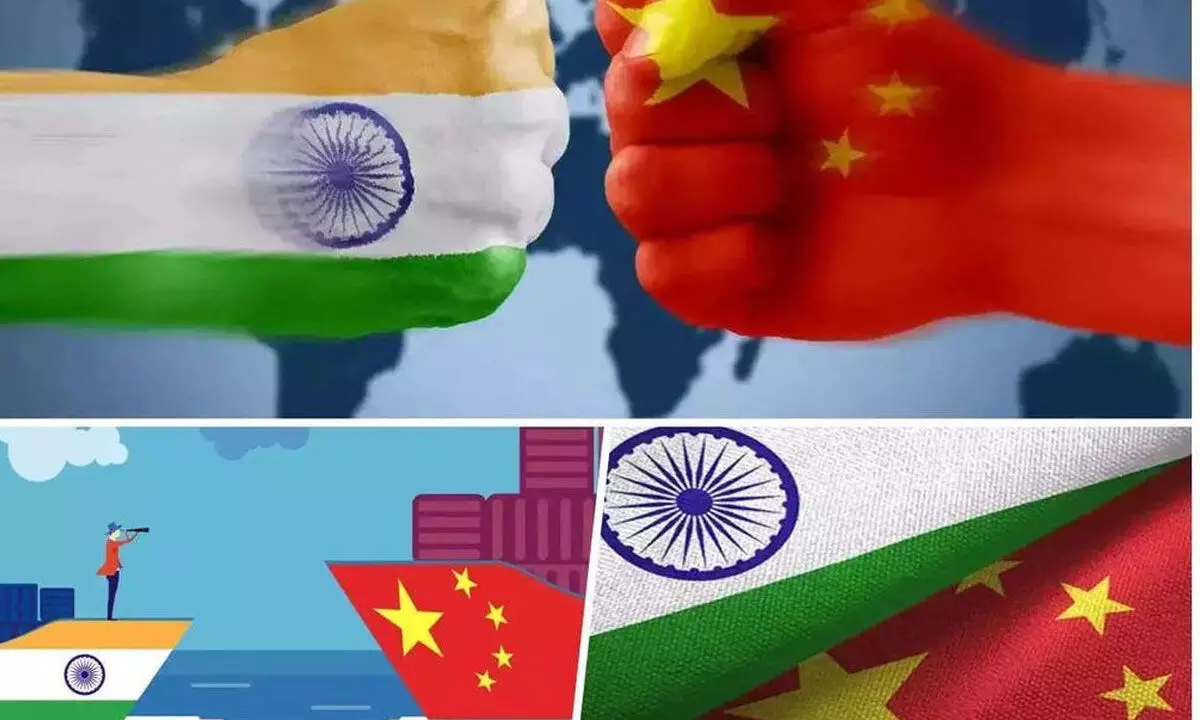India should capitalise on disadvantages vis-à-vis China

India’s acrimonious relationship with China has been evolving from bad to worse over the years as a result of the latter resorting to a spate of territorial violations and encroachments
India’s acrimonious relationship with China has been evolving from bad to worse over the years as a result of the latter resorting to a spate of territorial violations and encroachments. But, despite the incessant transgressions and provocations by China, one conspicuous factor that has continued to be a constant and unaffected is the continuing bilateral trade between the two countries. In fact, India has never been able to overcome the huge trade deficit with China, which, according to latest figures is a whopping $83 billion.
In fact, from the global trade point of view, India is the biggest importer from China with procurements valued at over $117 billion. India’s total imports from China have witnessed a considerable jump during the five-year period from over $68 billion in 2019 to $117 billion in 2023, an increase by $60 billion. China contributed to a major chunk –around 13 percent – of India’s global imports at around 13 percent. In comparison, India’s exports to China at around $16 billion – 2022-23, was only 0.6 per cent of latter’s imports from the world at around $2559 billion.
China’s major imports from India comprise ores, slag and slash at over $3 billion, Mineral oils and mineral products at $1.7 billion, Organic Chemicals at $1.60 billion, Fish and Crustaceans at a little over $1 billion, cotton at $55 million. While slag and ash are used in automotive and chemical industries, Mineral oils are used in petroleum and petrochemical industries.
As reflected in the considerable presence of Chinese electrical and electronic products in the Indian markets, Chinese exports to India of these products includes an extensive range of machinery, spare parts and a gamut of electronic devices, valued at $32 billion. Electronic devices accounts for around $18 billion, and, electrical products at nearly $12 billion.
China’s other major exports to India comprised Machinery, nuclear reactors, boilers at $22 Billion, Organic Chemicals at $14 billion, Though India is one of world’s biggest exporters of Pharma products, it sources around 62 percent i.e. $29 billion of the active pharma ingredients –API’s from China. A comparative analysis of the bilateral trade between India and China and their equations with global trading partners indicate that India share in China’s total imports from the world is miniscule and insignificant. In contrast, India is the biggest market for Chinese products. Significantly, China’s imports had decreased from $23 billion in 2021 to $15 billion in 2022 while India’s imports from the latter had increased by around $16 billion from $87 billion to around $102.5 billion during the same period during the same period. These equations should be a matter of concern, since it indicates India being at a disadvantage in its bilateral trade with China. It reflects the fact that while China can afford to reduce its import dependence on India, the same cannot be the case with India.
So, what are the options for India from the perspective of trade equations with China? Is India in a position to dictate terms or should it tolerate the threats? Can India impose an embargo on Chinese imports and source the same from other countries? Can India afford to strategically and systematically reduce dependence on Chinese products?
The trade equations, despite the imbalance, can empower India to dictate terms to the Chinese. First, China cannot afford to lose its biggest market? Second, China is conscious of the fact that India has alternative global sources to import a majority of the products. Moreover, trade with India is economically and geographically viable.
India can further capitalise on such advantages and negotiate for a higher share in China’s overall global imports. Of course, there is no denying the fact that India is dealing with an obdurate, intransigent and expansionist regime which does not believe in rational, logical and amicable geopolitical relationships.
(The Writer is a Senior Print, Electronic and Digital Media Journalist)















